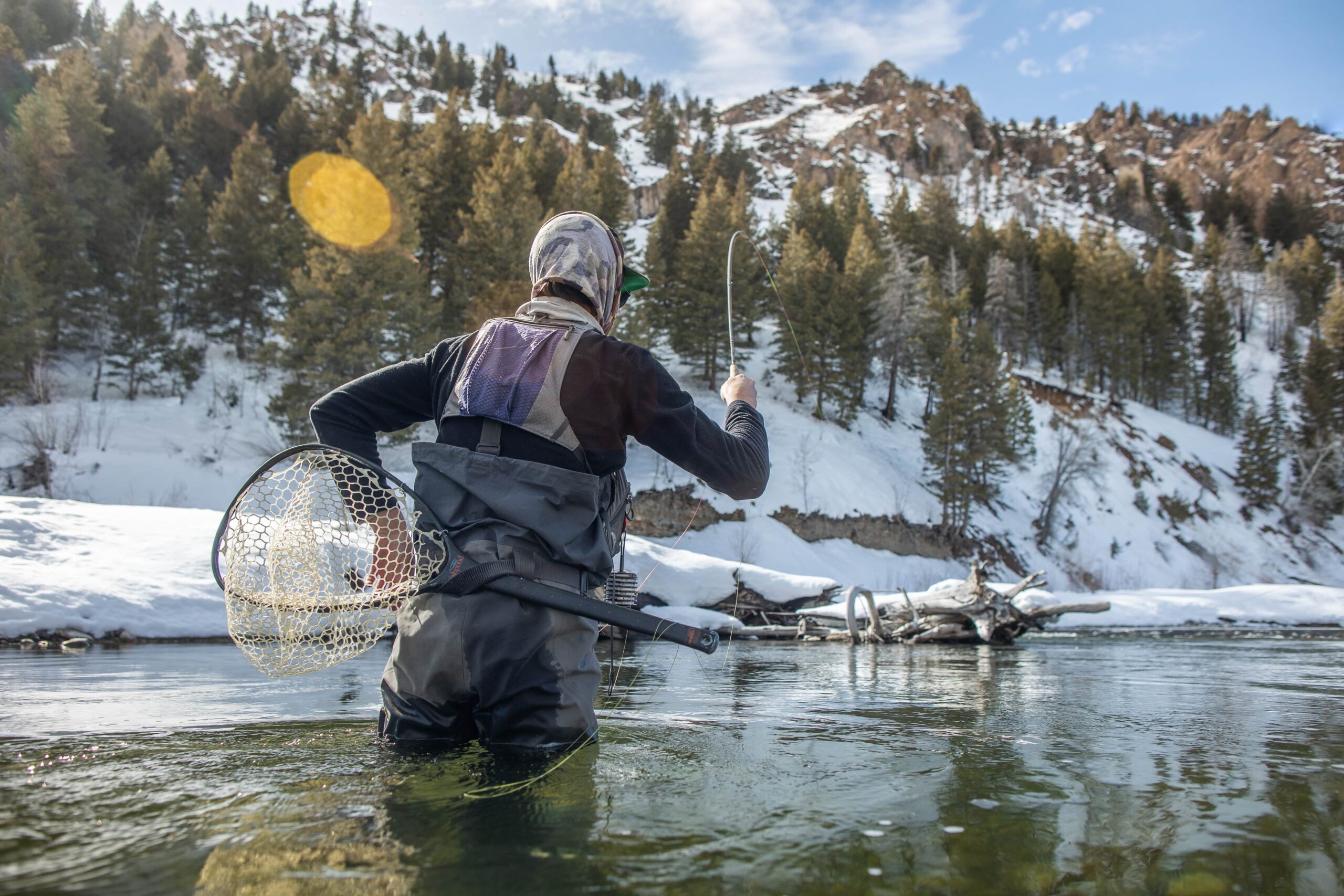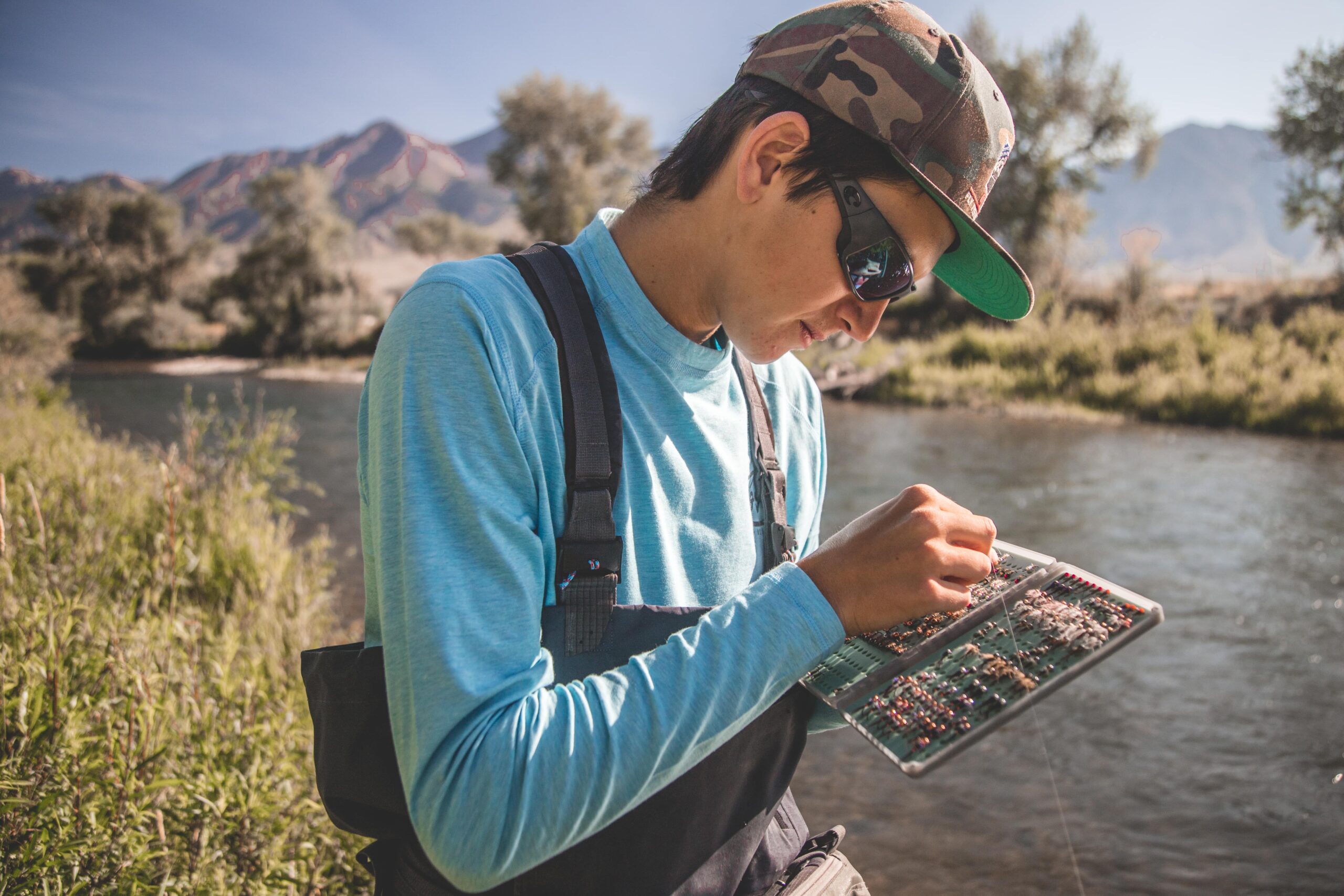4 Reasons to Ditch The Indicator
And 2 Reasons to Use One
Join Our List for More Fly Fishing Education
I get asked a lot, “What is the deal with this Euro-nymphing, tightline, indicator-less fishing method I keep hearing about. Is it actually any better?” (and yes, I get it asked exactly like that.) Well today, I’ve decided to answer this question from my own perspective and experience, and the results are actually quite impressive…
DISCLAIMER: This article is going to convince you to try euro nymphing. It’s ok, just go with it. You’re also going to have a lot of questions on how to start euro nymphing, and we want to help you with that too. If you want to learn more, our Euro Nymphing Course is an excellent resource. We don’t say this to convince you to spend money with us, we say this because we’re passionate about teaching anglers how to catch more fish and find new adventures. We love teaching others about the techniques that make fly fishing most enjoyable.
Watch The Video
It’s an easy read, and only takes about 30 minutes per lesson, and you can take it as many times as you want. You also get 50% off our euro nymph assortments (we have 3 of them and more on the way) and you can use that to stock your new euro box up with all the best flies, turning you into a euro nymphing master in less than a month. Check it out, our courses are simple, yet comprehensive allowing you to learn from a trusted, single-source and is always being improved and updated.
1 – It Beats the Current
Match The Hatch, Match The Current
2 – It Tightens Up Your Game
Shorter Casts = Better Casts
There’s a reason 50ft casts are called hero casts, because it takes a hero to make them work. I don’t care if you’re the best angler in the world, you have a lower chance for a successful hookset and landing of a trout the further out you cast. It’s just science.
3 – Double Those Drifts
Now That Fly Will Hunt Twice as Hard
4 – You Can Adjust Your Depth With the Tip of Your Rod
No More Line Kinks or Begrudging Indicator Adjustments
You can adjust your depth on every cast, or as needed. This is huge when you’re wade fishing from a deep hole to a shallow riffle. with an indicator, you have to adjust the rig every time you want to change depth in the river. With a tightline technique, you can simply raise or lower your rod the amount needed to change your depth. Makes it super easy to cover water as you wade of all different kinds (which in turn you’ll find fish in places you never thought and you’ll learn to stop walking over productive water)
And 2 Reasons to Keep the Indicator
While I’d say I tightline nymph about 80% of the time now, there are certainly some times you want to keep that strike indicator on. let’s go over those to make this a well-rounded guide.
You Can’t Reach the Drift You Want
Your in a Drift Boat
Conclusion
So if you still aren’t convinced that ditching the incidator can improve your fly fishing game, then I challenge you to prove me wrong. Go and spend 2 hours on the water. 1 hour with your method and 1 tightlining and see which catches you more fish. I’ve done this test many times myself and I know how it turns out, which is why I tightline.
Try it out, you’ll be impressed with how easy it is to outfish your buddies and find productive water across the entire river and not just the holes.
Euro Nymphing Course
Catch More Fish Than You Thought Possible
Lifetime Access: $199
Fully Online | Self Paced | Lifetime Access
7 Lessons | 90+ Pages | 20 Videos | Pics | Diagrams & More
What You’ll Get In This Course
- 7 Lessons that teach the entire euro nymph technique
- Perfect for beginner to intermediate skill levels
- Catch more fish than ever thought possible
- Get unlimited access, take as many times as you want
- Get three, 50% off coupons for our euro nymph assortments or other courses
- Guaranteed to make you a better angler or your money back
- Access through our app for offline reading
Lifetime Access: $199
Lesson 1
Length: 13 Pages + Videos

The Benefits of Euro Nymphing
The first step in understanding a new technique is to learn why it is so effective, and why using a strike indicator is really hurting your ability to catch more fish.
We cover the 7 disadvantages of indicator nymphing and then describe why euro nymphing solves these so elegantly. We lastly address common problems encountered while fishing and how euro nymphing turns them into advantages.
All Thing Euro Gear
In this lesson, we discuss the wide array of euro nymphing gear to help you understand what new gear you need, and the benefits that this gear brings.
We also provide a priority checklist that helps you with the essential gear, and utilizing your existing gear.
Lesson 2
Length: 20 Pages + Videos

Lesson 3
Length: 10 Pages + Videos

Learn the Top Euro Casting Techniques
Casting is remarkably different with euro nymphing. We will be covering all the top 4 euro cast techniques as well as discuss the concepts behind the casts to help you make successful and accurate casts. We include instructional videos on these top 4 casts to really help you learn these techniques.
The Drift
You cast for show, but you drift for dough…errr trout.
In this lesson, we provide written and video instruction as well as a ton of images to teach you the 3 essential drift techniques when euro nymphing. With these techniques you will have complete control over your nymphs in the river allowing you to catch even more fish than you ever thought possible.
Lesson 4
Length: 17 Pages + Videos

Lesson 5
Length: 10 Pages + Videos

Hacking the Learning Curve
Lessons 1 – 4 teach you waht you need to know, but lesson 5 simplifies and streamlines the process allowing you to learn faster. We discuss the most common struggles with euro nymphing and show you how to resolve them
FLY SELECTION
While we could do an entire course along on this topic (oh wait we did), we go over all the top patterns and their composition to understand why flies are so effective.
We’ll also cover what to do when you’re not catching fish and strategic adjustments throughout the day based on euro nymph knowledge.
Lesson 6
Length: 18 Pages + Videos

Lesson 7
Length: Ongoing Pages + Videos

Ongoing Tips and Tricks Section
This technique is always progressing, so we dedicated an entire lesson on tips and tricks to improve. This will get updated all the time with additional questions answered and tips provided. Check back often on here and ask questions to get them answered and added to this lesson
What’s Holding You Back?
This course will teach you the most effective way to catch trout that has ever been invented. We are genuinely excited to teach you this amazing new skill and look forward to having you in our community!
The Catch and The Hatch © 2022 | View Our Privacy Policy Here
